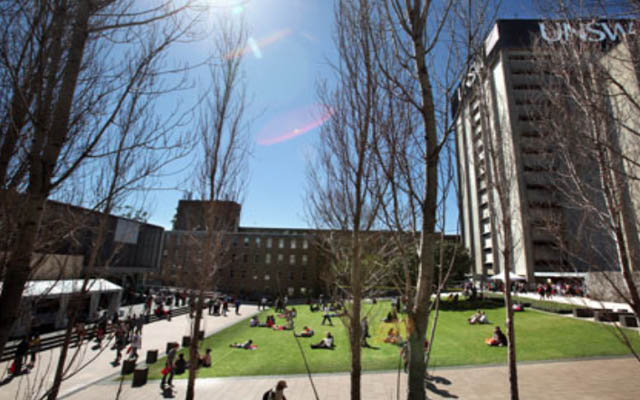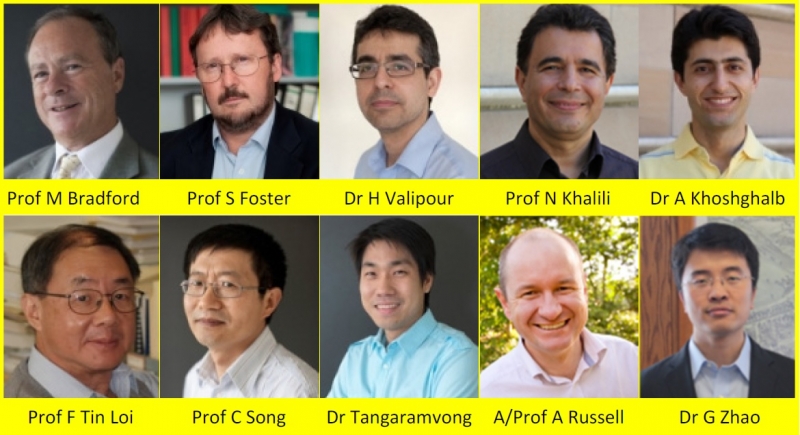Best of the best – School and CIES are one of the highest UNSW achievers in latest ARC research grants
 CIES hosted its annual Symposium on Thursday 6th November 2014 with the theme: “NATIONAL ROAD AND RAIL INFRASTRUCTURE - Structural Engineering Perspectives for Sustainable and Resilient Infrastructure”
CIES hosted its annual Symposium on Thursday 6th November 2014 with the theme: “NATIONAL ROAD AND RAIL INFRASTRUCTURE - Structural Engineering Perspectives for Sustainable and Resilient Infrastructure”
The symposium brought together an array of local, national and international leaders working in the area of road and rail infrastructure to try and bring a focus to this issue and the potential remedies to this situation.
Engineers Australia has compiled two National Infrastructure Report Cards, in 2005 and 2010. For both of these exercises, road and rail infrastructure were found to be the most poorly performed of the nation’s infrastructure systems.
The speakers discussed the current state of these systems, the areas of primary need and future areas of research and potential government investment. Inherent in much of this future investment is that structures must be both sustainable and resilient. Another area of increasing focus in the area of infrastructure systems is the use of technology and the increased potential for the use of structural health monitoring.
The School and CIES remain at the top of the research game having won Australian Research Council grants in the latest round. With 4 new Discovery grants and 1 new LIEF (Linkage Infrastructure, Equipment and Facilities) grant, CIES won more than half the School’s total and more than any other research centre in its discipline nationwide. These wonderful results consolidate CIES’ position as the leading infrastructure centre in Australia.
The Head of School and CIES member, Professor Stephen Foster, congratulated all staff who have been successful this round, and thanked everyone who applied for their hard work. ‘As we know’ he said, ‘these are extremely competitive grants!”
 |
We congratulate all our successful CIES staff - topics listed below -
Discovery Project Grants:
Professor Mark Bradford - DP 150100446 - $664,300
This project aims to investigate the capacity of high-strength steel (HSS) flexural members by undertaking physical tests and numerical simulations, and proposes to craft innovative overarching design guidance for them within a paradigm of Design by Advanced Analysis.
Professor Stephen Foster & Dr Hamid Valipour - DP 150104107 - $266,300
This study investigates the moment-rotation performance of steel fibre reinforced concrete (SFRC) beam-column connections containing economical fibre dosages. The study is expected to provide data on the post-ultimate behaviour and robustness of SFRC moment hinges and determine moment-rotation relations for adoption by engineers and Standards bodies.
Associate Professor Adrian Russell, Prof David Muir Wood – DP 150104123 - $325,500
This project aims to make discoveries for modelling initiation, rate of progression and consequences of seepage induced internal erosion through soils which make up critical water retaining infrastructure like dams. It aims to achieve an understanding of how fundamental microstructural (particle and pore) properties governing erosion have the potential to destroy infrastructure.
Professor Chongmin Song, Emeritus Professor Francis Tin-Loi, Dr Sawekchai Tangaramvong - DP 150103747 - $384,700
This project aims to develop, directly from computer-aided design models or digital images, an automatic numerical simulation approach for the safety assessment of engineering structures in three dimensions. Underpinning this novel approach is the proposed use of scaled boundary polytope elements and a complementary octree algorithm for mesh generation.
LIEF – Linkage Infrastructure, Equipment and Facilities
Russell, A/Prof Adrian R; Khalili, Prof Nasser; Zhao, Dr GaoFeng; Khoshghalb, Dr Arman; Sloan, Prof Scott W; Kouretzis, Dr Georgios; Indraratna, Prof Buddhima N; Rujikiatkamjorn, A/Prof Cholachat; Cassidy, Prof Mark J; Gaudin, Prof Christophe; Williams, Prof David J; Scheuermann, Dr Alexander LE 150100130 - $320,00
This project aims to develop Australia's most advanced earthquake shaking table to investigate soil-structure interactions:. The shaking table will simulate earthquakes and enable controlled testing of three-tonne models of foundation and soil-structure interaction systems typical of Australia's infrastructure.
We also congratulate Dr Gaofeng Zhao and Professor Khalili who are also involved in a successful LEIF grant (LE150100058) administered by Monash University.



